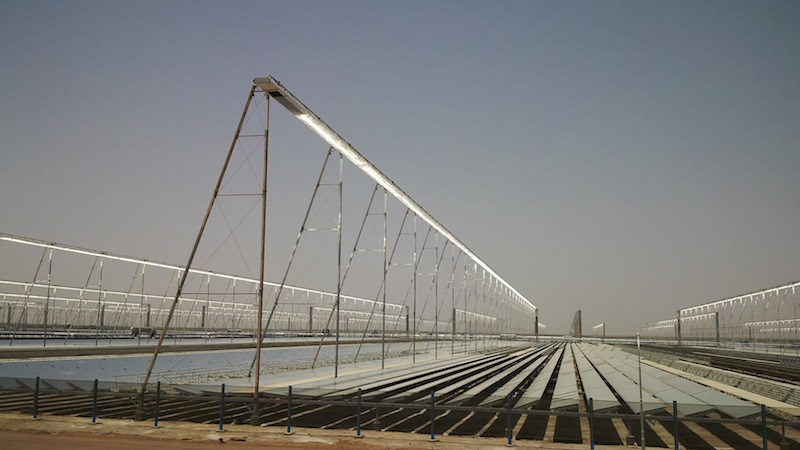One of the questions I often get asked about Pintail Power’s hybrid energy storage systems is “what’s the round trip efficiency?” This is a great, but irrelevant question, because it is NOT inefficiency that is standing in the way of more storage deployments, but cost. In our view, the right metric is $/MWh of delivered energy, yet many continue to use the distorted lens of technical efficiency instead.
This was brought home to me during lunch at last week’s ASME Power conference. An NREL senior engineer told me that he ‘didn’t like’ the AREVA Solar CLFR design that was commercialized at the 125 MW Reliance project in Dhursar India. He felt that the receiver was too high, making the outer rows of mirror too ineffective.

Solar Steam Generators (SSG) at 125 MW Dursar CSP plant, from Asian Development Blog.
As Chief Engineer and Senior VP of Engineering responsible for that design, I confess there are a few things I don’t like either. However, the design challenge was not to maximize optical efficiency; instead it was to deliver the most performance within the budget in order to win the job and build the plant.
Mirrors were not our primary cost and performance challenge; in fact, we could put more mirrors in the solar field at lower cost than any other competitor. But there were a host of technical, cost, performance and contractual challenges that had to be considered and optimized. For example, matching the thermal-hydraulic capability of the Solar Steam Generator (SSG) to the mirrors, costs for controls & instrumentation, civil/structural costs to support each SSG, the sizing and arrangement of interconnecting piping, and of course the overall performance of the power block.
Let’s go back to the strongly held opinion of the NREL engineer and imagine removing the outer two mirrors from each of the 39 SSGs that were installed at the project. To have the same overall mirror area would have needed 41 SSGs (actually 42, but let’s assume higher annual average optical efficiency). Unit costs for the boiler, structure and controls would not have changed, but costs would have gone up by about 5% for the additional SSGs, a slightly larger solar field (by the road width needed to service each SSG), and longer piping runs for high pressure feedwater, steam, and drains. Higher optical efficiency would have increased the cost without increasing the annual generation from the plant.
Voltaire’s aphorism that ‘the perfect is the enemy of the good’ applies to efficiency metrics. So it is not the Round Trip Efficiency that matters, but the cost to deliver the required functionality.
That’s what engineering is about, and that’s why we hybridize at Pintail Power.
This was originally posted on LinkedIn